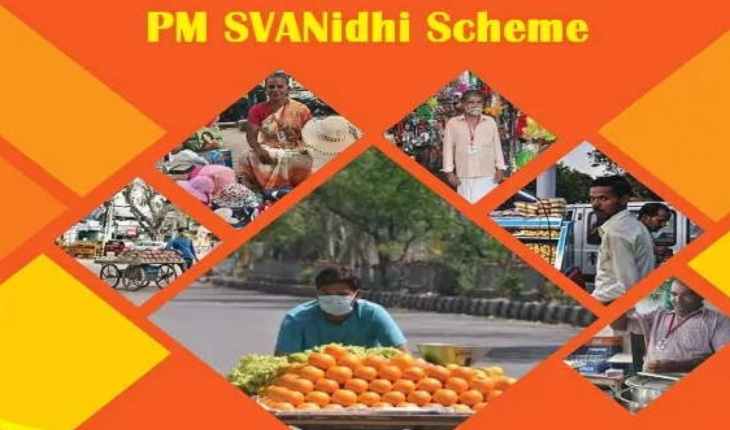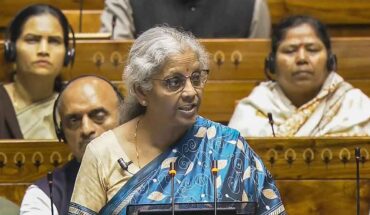
The poor have neither caste nor religion. It is difficult for them to live every day. When it is not possible for the villagers to survive in villages, then they move to big cities or metros in search of employment. When they are unable to get employment even in cities due to lack of technical skills, they start self-employment. Usually they sell vegetables, readymade clothes, toys, decorative items, flowers etc. on the roadside. Still their life is full of struggle. Due to lack of capital, they are not able to earn enough to meet their daily needs. To help such people or make them self-reliant, the government had launched the PM Street Vendor Self-reliant Fund (PM Swanidhi) on 1 June 2020.
Under this scheme, a loan of Rs.50,000 is given to the street vendor without any guarantee or security. This amount is released to the borrower in 3 instalments i.e., Rs.10,000, Rs.20,000 and Rs.20,000. There is a provision in the scheme to release the second and third instalments only after the first instalment has been paid, so that the possibility of the loan account turning into a non-performing asset (NPA) is reduced and the borrowers remain aware of the responsibility of repaying the loan. There is also a provision in the scheme to give interest subsidy of 7 percent to the borrowers who repay the loan regularly. Cashback up to Rs.1200 is given every year to the borrowers who do digital transactions, so that the culture of digital transactions develops among them, and they can keep pace with the digitalization campaign of the government.
Till now, under this scheme, all three instalments have been disbursed in 70 lakh loan accounts, amounting to Rs.9100 crore. The percentage of taking and repaying the loan is 68 percent from the first to the second instalment and 75 percent from the second to the third instalment. As awareness increases, the tendency to repay loans can improve further.
Government banks are playing an important role in giving shape to PM Swanidhi, in which State Bank of India is at the top. It has disbursed 31 percent of the total loan amount disbursed. Bank of Baroda is at second place with loan disbursement of 11 percent, while Union Bank of India is at third place with loan disbursement of 10 percent.
At the time of launch of this scheme, the government had set a target of disbursing the first instalment i.e., Rs.10,000 to 50 lakh street vendors. Later, due to high demand, public sector banks disbursed 106 percent loans more than the target. Seeing the success of the scheme, the government revised the old target and set a target of disbursing loans as first instalment to 63 lakh vendors instead of 50 lakh vendors, while including the second and third instalment, it will be disbursed to 88.5 lakh vendors by December 2023. However, this target has not been achieved yet, but it is expected that banks will achieve this target soon.
Among the beneficiaries of PM Swanidhi, 75 percent are from non-upper caste, in which the percentage of backward classes is 44, while the percentage of Scheduled Castes and Scheduled Tribes is 22. The number of women among the beneficiaries is 43 percent and the number of men is 57 percent. 26 percent people from the upper caste have taken advantage of this scheme, while 8 percent people from the minority class have taken loans under this scheme. Among those taking benefit of this scheme, the number of people aged between 26 to 45 years is two-thirds and the number of people aged between 18 to 45 years is three-fourth, while the average age of those taking benefit of the scheme is 41 years. These figures show that the weaker sections of the society including women, young and old are all trying to become financially strong with the help of this scheme.
After loan disbursement, the percentage of people spending through debit cards has increased by 50 percent in the year 2023 as compared to the year 2021. The average expenditure has increased by Rs.28,000 in just 2 years. Beneficiaries of PM Swanidhi spent Rs.51,672 through debit cards in the financial year 2021, while Rs.60,974 were spent in the financial year 2022, Rs.79,372 in the financial year 2023 and Rs.32,555 in the current financial year till the month of August, which shows that the beneficiaries of PM Swanidhi are gradually becoming self-reliant. Due to PM Swanidhi Yojana, the spending propensity of street vendors and their acceptance towards digital transactions has increased. Now they have started shopping online with the help of debit cards. They have also started taking advantage of cashback, earned points, discounts on debit card transactions etc.
It is also being seen that those who had taken loan under PM Swanidhi in the financial year 2023 were spending more than those who had not taken any loan in the financial year 2022. Similarly, those people who have taken the second and third instalment of the loan, their financial capacity has improved further, and they are spending regularly. The national average of such people who spend regularly is 22 percent. However, the percentage of such people varies state-wise. In this case, the percentage of some states is more than the national average, while the percentage of some states is less than the national average. Presently more than 9 lakh street vendors are spending regularly after loan disbursement. 63 percent of the people, whose age is less than 25 years or more than 60 years, were spending beyond basic needs after the loan amount was disbursed.
According to PM Swanidhi dashboard, 5.9 lakh borrowers live in big cities, while the rest live in other cities. In Banaras, 45 percent of borrowers are spending regularly, which is the highest in the country. In this case, Bengaluru is at second place, Chennai is at third place and Prayagraj is at fourth place. The dashboard also shows that people from small towns are also taking benefits from PM Swanidhi Yojana. If this trend becomes stronger, the percentage of workers migrating from small towns to metropolitan cities will reduce.
After opening the account under Pradhan Mantri Jan Dhan Yojana, people usually used to spend money to meet their basic needs or used the bank account to transfer money, but after getting the loan under PM Swanidhi Yojana, people used to spend money to fulfil other than basic needs, because their business has strengthened, and beneficiaries have now started spending on other items as per their wish.
There has been an incremental increase of 8 percent in credit from accounts opened under Pradhan Mantri Jan Dhan Yojana and loans being given under PM Swanidhi. In the last 9 years, 30 percent are the beneficiaries who had opened a deposit account for the first time or had also taken loan facility for the first time. At the same time, the gross domestic product (GDP) has increased by 6 percent from fiscal year 2014 to fiscal year 2023.
In the last 9 years, the government has started many schemes to eradicate poverty. Overdraft facility was also given to those who regularly transact in the accounts opened under the Pradhan Mantri Jan Dhan Yojana, which helped the weaker sections of the society to improve their financial condition. Under Sukanya Samridhi Yojana, 42 percent new accounts were opened only because of Pradhan Mantri Jan Dhan Yojana. Subsequently, to bring the weaker sections of the society into the mainstream, ensure inclusive growth and help businesses during the Corona pandemic, the government implemented PM Swanidhi, Pradhan Mantri Mudra Yojana, ECLGS etc. Today, due to these schemes, 6 percent of the workers working in the informal sector have been formalized, which has increased the possibility of providing more facilities to the needy people, strengthened the economy and strengthened inclusive development. Besides, the possibility of increase in government revenue in the coming years has also increased.
Satish Singh, Ahmedabad based Senior Columnist,Views are personal.





